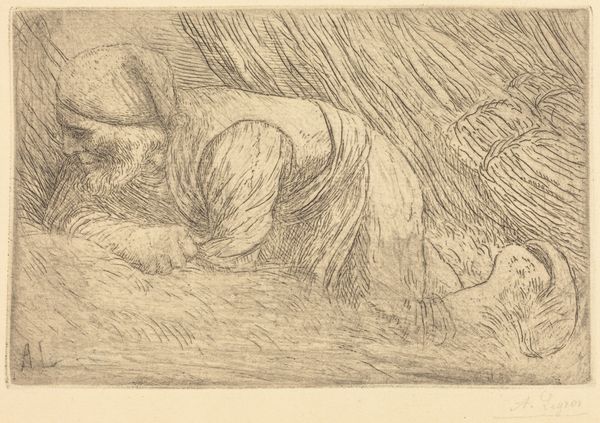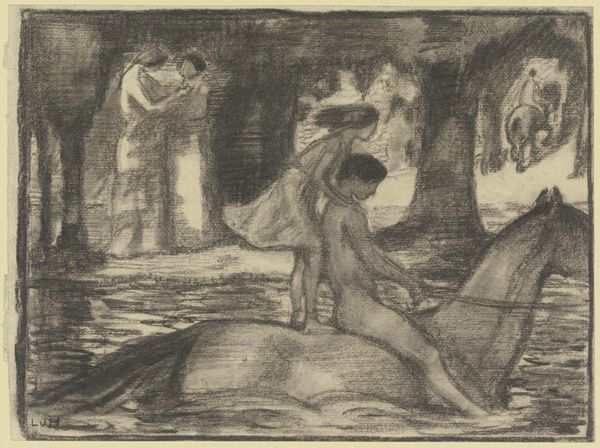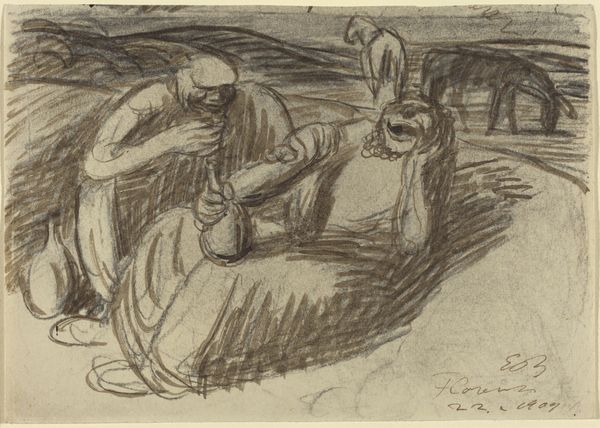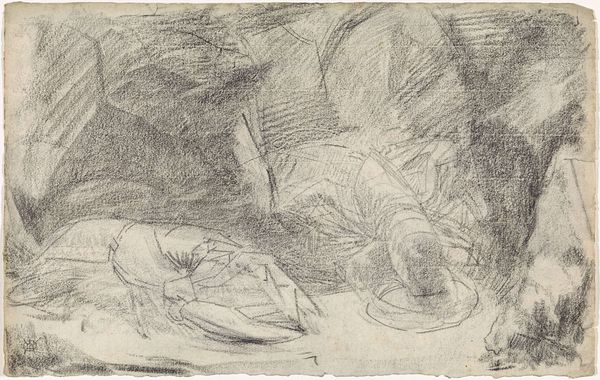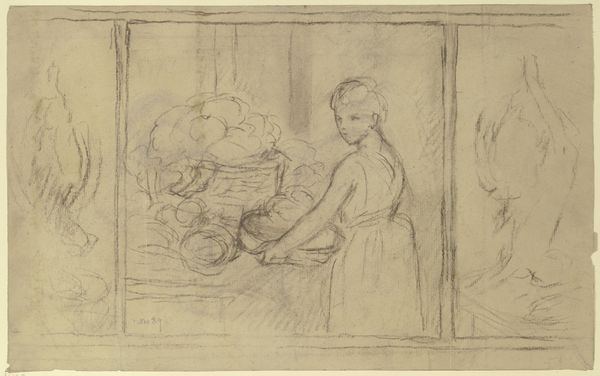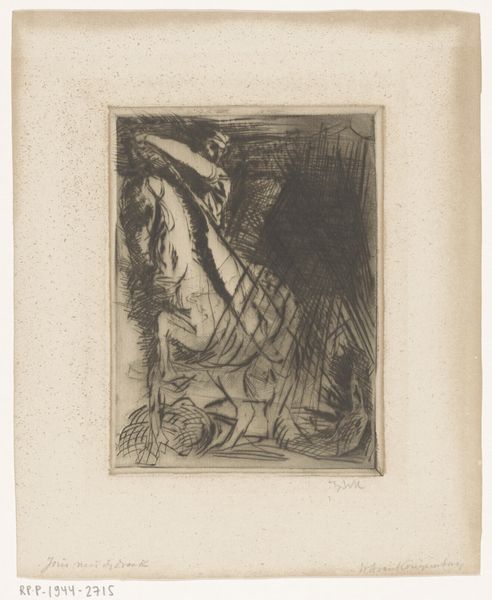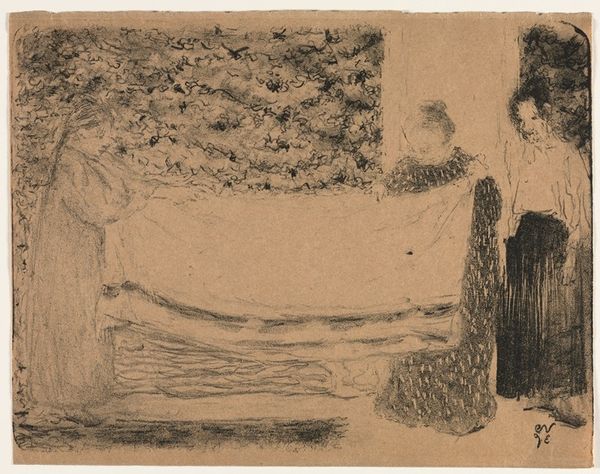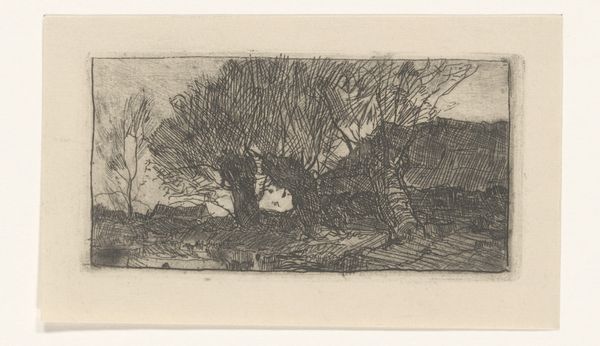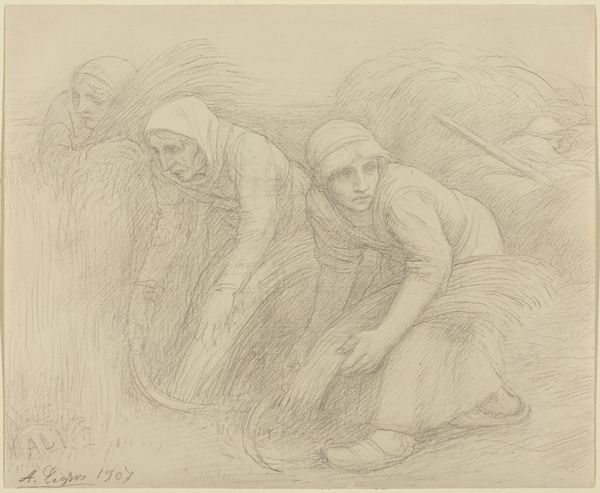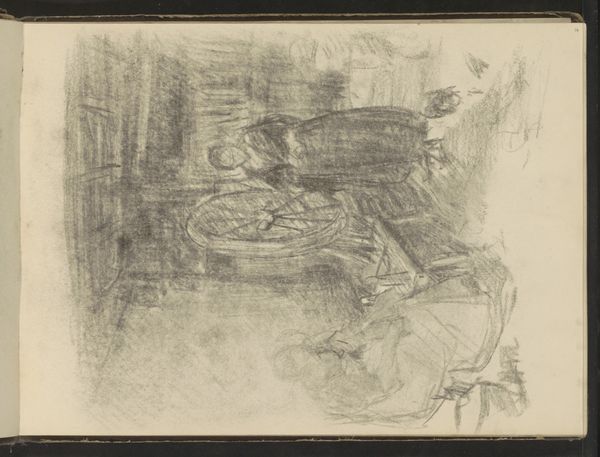
drawing, pencil
#
portrait
#
drawing
#
arts-&-crafts-movement
#
landscape
#
pencil
#
realism
Copyright: Public Domain: Artvee
Editor: Richard Nicolaüs Roland Holst’s pencil drawing, “Huizer vrouw, zittend aan de waterkant” from 1898… It’s incredibly serene, almost melancholic. She seems lost in thought. What kind of symbolism can you find here? Curator: There's a pervasive sense of enclosure. Notice how the woman is framed by the trees, almost cocooned? Water, too, in art can represent the unconscious, the source of life, but also of potential danger, when untamed. It suggests a contemplative state, possibly a negotiation with inner feelings. Editor: I hadn’t really thought about the water like that. I was focused on the woman’s dress, that bonnet; I thought it rooted her to a specific time and place. Curator: And it does. The costume is a signifier, a marker of identity, particularly a visual language for a certain rural Dutch community. The woman’s anonymity, as her face is hidden, paradoxically universalizes her, while also signaling the constraints placed upon women of that era and location. The Arts and Crafts movement valued simplicity, authenticity, handcrafts: it’s interesting to view her in that context as a symbol of tradition. Does she represent something lost or something enduring? Editor: That’s a powerful question, to be honest. Seeing her as a symbol and not just a figure makes me think about how we still carry our history with us, in both obvious and subtle ways. Thanks for opening my eyes. Curator: The past echoes, certainly, and often we don't even realize we are listening. Thinking about symbols like these helps us notice those echoes.
Comments
No comments
Be the first to comment and join the conversation on the ultimate creative platform.


